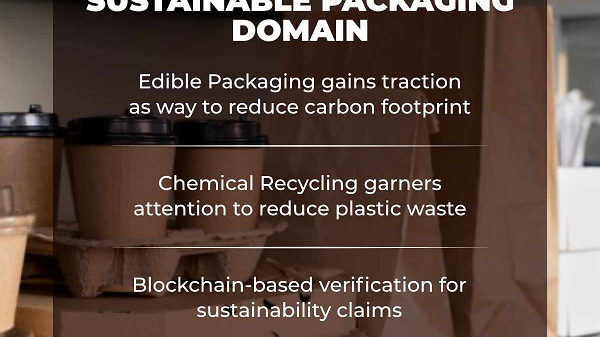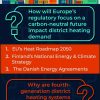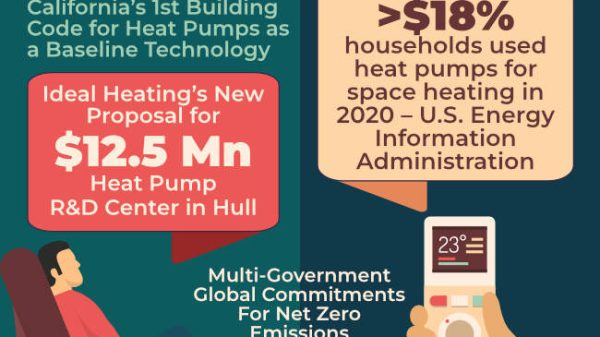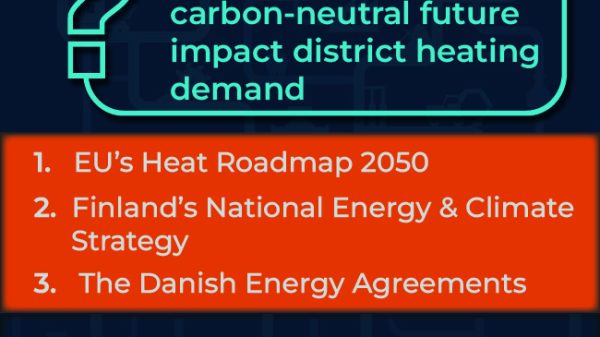In the dynamic automotive sector, consistent growth of the electric vehicle (EV) charging industry has become increasingly evident. Consumers and businesses alike are recognizing the imperative shift toward sustainable and eco-friendly transportation alternatives. As such, it is necessary to explore the intersection of technological developments, environmental consciousness, and the evolving demands of a world embracing the future of electric mobility. Key drivers behind the electric charge transforming the way we power our vehicles and revolutionizing the future of transport include strong regulatory support, accelerated EV adoption in the U.S. and Europe, surging consumer awareness across APAC, among others.
Opportunity: Over the past decade, the deployment of electric vehicle charging stations has witnessed incredible growth rate. According to Global Market Insights Inc., the EV charging station market value could register over 24% CAGR in terms of revenue between 2023 and 2032. It demonstrates a huge potential for component manufacturers and automakers.
Major opportunities for the industry arise out of the need for expanding charging infrastructure in urban areas and across highways, providing better accessibility to consumers. Energy providers are also making efforts to integrate renewable power with charging facilities, for offering true green infrastructure.
Electrify America, the largest open DC fast charging network in the United States, had announced in August 2023 the launch of a new 75MW solar power generation project, that would meet the increasing demand from its charging stations. The entity boasts of more than 300 facilities at accessible highway locations throughout the U.S.
China-based Star Charge, founded in 2014, operates over 300,000 EV charging stations in the country, with significant focus on highways. It offers rapid charging facilities to help commuters cut down on overall travel times, in turn minimizing range anxiety for EV fleets through strategic charging network planning.
Let us understand the influence of certain regional and technological factors on the global deployment of electric vehicle charging stations.
Ecommerce boosting electric mobility development in the U.S.:
The e-commerce trend has exerted a positive impact on various industries, including the U.S. electric vehicle (EV) market. With an increasing penchant for online shopping, there has been a surge in demand for last-mile delivery services, prompting companies to invest in sustainable transportation solutions.
The U.S. battery electric vehicle industry is experiencing a notable boost as e-commerce players and logistics companies adopt electric delivery vehicles to meet environmental regulations and reduce their carbon footprint.
For instance, in July 2022 EV startup Canoo had confirmed that retail giant Walmart has signed a deal for 4,500 electric delivery vans to add to its fleet. The same year Walmart has recently also announced it would build dedicated fast charging networks across thousands of locations through the country to cater the growing EV numbers in the region.
Amazon, which partnered with Rivian a few years ago to make nearly 100,000 electric delivery vans, has seemingly deployed a large number of these units in more than 1800 cities in the U.S. The company is plans to keep investing in expanding its fleet and the charging infrastructure required over the coming years.
In another major effort, leading shipping & logistics company A.P. Moller – Maersk has committed to adding 300 electric trucks between 2023-2025 to its fleet in North America, implying a sizable boost to the regional commercial EV sector.
According to the U.S. Department of Commerce, the total retail e-commerce sales in the country was over US$1 trillion during the year 2022, which was approx. 7.7% increase compared to the previous year. With consistent interest of consumers in convenient online shopping and the rise in options available to them globally, the e-commerce sector will be a large contributor to North America EV industry.
Strong regulatory system strengthens European EV markets:
Stringent environmental regulations and a collective commitment to reducing carbon emissions are compelling governments and businesses in Europe to invest in sustainable transportation solutions. The European Commission has adopted proposals to reduce GHG emissions by at least 50% by the year 2030, aiming to go carbon-neutral by 2050. Electric mobility is one of the key areas of focus for the regional authorities and transportation agencies.
Countries such as the U.K., Italy, Germany, Netherlands, and many others are devising strategies to push EV sales and the promotion of locally manufactured battery electric vehicles. It has stirred investments in charging station installations and development of required EV platforms.
Italy, which is considered slow in terms of adopting the EV trend, is planning to improve its image in this regard with strong government support. As reported in January 2024, the country’s Industry Ministry could spend around US$1 billion on financial incentives to encourage consumers to buy electric cars, especially low-income families. Gradually, the need for private and commercial charging points will increase substantially.
The U.K had revealed a unique plan in 2023, which could be an effective way to bolster the quality of electric vehicle charging infrastructure. In 2019 the number of out of service charging facilities in the region was 8%, but the government aims to bring it down to 1%. To fulfil the mandate for 99% reliability, manufacturers of charging stations and components, along with station operators, will need to enhance their quality of product for better reliability.
Other countries in Europe have embraced similar policies or mandates to attract more buyers toward BEVs, invariably boosting the accessibility to green mobility. An already dominating renewable energy landscape across the continent will further its emission reduction plans.
In 2022, solar and wind energy contributed over 22% of EU’s electricity generation, surpassing fossil gas for the first time. The integration of renewables such as wind energy with EV charging facilities can help improve the station reliability, create job opportunities, and offer a cost-effective way to lower carbon emissions.
In addition to factors such as governments driving EV purchase and green energy generation capacity, Europe electric vehicle charging station market outlook looks robust with a deeper focus on enhancing charging speed, availability and ease of payment. Listed below are a few highlights from an announcement by the European Parliament made in 2023;
The EU will implement rules for installing charging points at least every 60Kms by 2026 on the Trans-European Transport Network, which covers almost the entire continent.
For electric cars, these facilities should have around 400kW capacity and must go up to 600Kw by 2028.
For electric bus and trucks, charging points should be available at every 120Kms, with up to 1.4-2.8MW capacity.
The initiative represents a bold move by the EU to enrich the regional EV charging capacity and demonstrate its aspiration to achieve green energy targets to the world.
Soaring venture capital augments EV trend in APAC countries:
Asia Pacific region boasted of the highest number of electric vehicles sales in the world during 2022, according to the IEA, with China alone accounting for 60% of global sales. In fact, China and Japan dominate the regional EV industry share, but other nations are also witnessing accelerated growth in the sector. GMI reports that APAC electric vehicle charging station industry size is anticipated to surpass US$170 billion by 2032, driven by a number of factors.
The primary factor enabling this dominance is the unrivaled automotive and component manufacturing sectors in countries such as China, India, Japan, Vietnam, South Korea and Taiwan, among others. Add to that a wider range of EV categories – including three-wheelers and two-wheelers – available to private and commercial users, the potential for installing charging stations has skyrocketed over the last few years.
However, through the last decade, the EV sector in APAC has recorded unprecedented development due to significant local and foreign investment in automotive startups aiming to join the road to a carbon-neutral future.
Despite many players and the presence of globally established EV makers, the Chinese market seems to have room for more. Rox Motor Tech, offering a plug-in hybrid SUV, had closed a reported US$1 billion funding round in September 2023. Separately, Avatr Technology, an electric SUV start-up, raised US$411 million in the same month. Higher e-SUV adoption will certainly have an impact on charging station requirements.
Terra Motors, a Japanese startup offering electric motorcycles and unique charging infrastructure, recently secured US$28 million from multiple ventures in a series C funding round. This funding, as per the company, will be directed towards expanding its charging network across the nation.
In December 2023, Indian start-up BluSmart raised around US$24 million in an equity funding round to develop large-scale electric vehicle charging superhubs. The company provides EV-based ride hailing services in a few major Indian cities, along with the required charging stations.
Besides private funding growth, public financing is also playing a vital role in fueling the need for EV-related services and platforms. For example, last year Australia’s federal government had said it would spend around US$46 million on charging infrastructure development.
We are witnessing the growing acceptance of electric vehicles among consumers, collaborative efforts of international organizations and the innovative solutions emerging from local initiatives. The trajectory is clear – a future where EVs will dictate how we travel and could influence global investment strategies. It will not be merely about plugging in vehicles, but about fostering sustainable living, reducing carbon footprints, and embracing a future where every charging station is a step towards a cleaner, smarter planet.






















